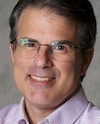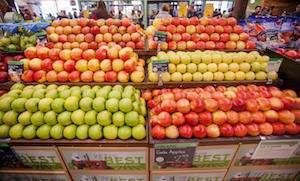
An Irish entrepreneur based in Gibraltar wants to use cryptocurrency and tontines to disrupt the annuity industry in the way that Uber has disrupted the taxi business, Airbnb has disrupted the global lodging industry and Amazon has disrupted brick-and-mortar retail stores.
Dean McClelland, a 47-year-old former investment banker and self-described “crypto-capitalist,” isn’t the first to claim that tontines—a non-guaranteed, self-amortizing payout fund—can produce higher income for retirees than traditional annuities can deliver.
But he may be the first to market a financial product that weds the 17th century concept of tontines with the 21st century concepts of “blockchains”—the decentralized, encrypted, anonymous public ledgers—and the digital currencies in which blockchain transactions are conducted.
His company is called TontineTrust. This fall, McClelland has been assembling a management team, looking for hedge fund-type investors, and preparing an “initial coin offering” of a cryptocurrency he calls TON$. He spoke with RIJ recently from his office in the tiny British territory of Gibraltar, home of the famous limestone crag that guards the Atlantic entrance to the Mediterranean Sea.
‘What if we use a blockchain?’
McClelland, like quite a few people who are relatively new to retirement income, claims that his mother sparked his interest in the Boomer-aging opportunity.
“My mother was talking to me about the worries of the ladies and gents that she meets in her golf club,” he said. “Most of them have no clue about what rate they should be saving at today or about how much they can spend each year once they retire. In fact, whenever one of them dies, they wonder why they were saving at all.
“I did some research into the retirement income problem, and every solution had a serious flaw,” he added. “Then I started reading about tontines. I watched videos about them. They made perfect sense. Then I thought, ‘If you’re going to ask for people’s savings, but remove the insurance company from an annuity, you’d have to make it bulletproof.’ So we said, ‘What if we use the blockchain?’
 This fall, McClelland (left) has been introducing himself to tontine and decumulation experts in North America like Jon Forman, Richard Fullmer, Gary Mettler, Michael Sabin and Moshe Milevsky.
This fall, McClelland (left) has been introducing himself to tontine and decumulation experts in North America like Jon Forman, Richard Fullmer, Gary Mettler, Michael Sabin and Moshe Milevsky.
“Dean is pretty far along,” said Forman, a law professor at the University of Oklahoma who has written about tontines. He calls them survivor funds. “Dean seems not to have a lot of regulatory hurdles in Gibraltar. And he probably has the ability to raise the money he will need to get tontine trusts off the ground.”
Richard Fullmer, an actuarial investment strategist who has co-authored a whitepaper for TontineTrust, told RIJ, “They’re at the pre-startup stage, trying to raise capital to create a real business. A lot of work has gone into putting together a prototype. It’s a marketing effort at this point.”
“[McClelland] has reached out to several people,” said Gary Mettler, a former Presidential Life executive specializing in income annuities. “Some have gone to Gibraltar and provided non-compensated support just because of the novelty of the effort. [TontineTrust] has a significant amount of money. They have legal support in Europe and product development support. They’re out front with it. It’s not under the radar.”
Like the ‘Hunger Games’
With annuity sales in the U.S. and the U.K. in a slump and Boomers’ need for lifetime income incompletely addressed, there’s both a need and an opportunity for new ideas around decumulation. Meanwhile, Bitcoin’s surging value this year has a lot of people pondering new uses for cryptocurrencies and the blockchain.
Like tontines, for example. If low payouts are the reason why near-retirees or retirees buy relatively few annuities, then tontines might be the answer. Since tontines don’t have lifetime guarantees (the participants share both the investment risk and the longevity risk), they don’t need life insurers to underwrite them. Forman and others estimate that 10% to 15% of the cost of a lifetime annuity goes to the life insurer (for insurance agent commissions, and for insurance company reserves, hedging, and profits).
Digitalization could make tontines even cheaper. By substituting the cloud-based blockchain for a traditional recordkeeper, investing the participants’ money in a global balanced exchange-traded fund (ETF), and capturing mortality credits more directly, a digital tontine could deliver as much as 40% more income per year to participants than an income annuity, McClelland said. He envisions an all-in fee of about 1% per year.
For those unfamiliar with life annuities or tontines, a definition of “mortality credit” may be in order. In a pure annuity or tontine, every participant’s money stays in the fund when they die and is credited to the surviving members. That’s the advantage of longevity risk pooling.
But annuities and tontines handle longevity pooling differently. In the annuity, an insurance company anticipates the future deaths and embeds a piece of the expected cash flows into the first and every subsequent fixed payment. In a tontine (although this design can vary), the payments climb significantly as the mortality rate of the members accelerates.
Tontines, like mutual funds, come in closed-end and open-end versions, and McClelland prefers the closed-end type. “I like the idea of, we get 10,000 people in the pool, all within two or three years of a certain age, and we position it like the ‘Hunger Games’: It’s your job to stay alive to win the ultimate reward. I think the competitive angle will appeal to people and help it sell.”
While the opportunity is huge, so are the challenges. McClelland imagines a globalized business, both retail and defined contribution. There are financing issues, asset management issues, actuarial issues, recordkeeping issues, regulatory and legal issues, marketing and distribution issues, and tax issues. How will TontineTrust deal with them?
For financing, McClelland will hold an initial coin offering. “We want to raise a ton of cash,” he told RIJ. “To do that we’ll issue 300 million tokens and sell them throughout the world. The management team will have some tokens. There will be some for recruiting and paying IARs (investment advisor representatives).”
In other words, he’ll be minting a new cryptocurrency, which he calls TON$, which can be traded like equity shares but also loaded onto debit cards for getting cash out of ATMs. “The tokens are traded on exchanges,” he said. “There is now $5 billion in bitcoin traded every day. There are new coins discovered all the time. Or you create them. We’ll do this instead of issuing equity or bonds.”
Asked to explain cryptocurrencies, McClelland offered an analogy. “Imagine that American Express came out and said, ‘From now on we are capping the number of rewards points we issue. If customers want to earn more points, they will have to buy them from other customers. You create a closed loop, which is a way of creating a market. That’s one way to think about digital currencies. There are cryptocurrency markets, and the tokens are the way we reference our transactions.”
Skin in the game
Distribution will be global, and TontineTrust will need an army of financial advisors to introduce the product to retail investors. He’ll promise them a five percent commission but spreads the risk by paying them in TON$, not their own local currency. “My feelings toward investment advisors are not the warmest. The conflicts of interest are just so massive,” McClelland said.
“But you can’t build a global distribution network without them. So you need to pay them. We can tell advisors, work with us, we’ll give you 5% of the money you bring in, by issuing you a tradable token. You can keep these tokens or sell them. They would help us get customers through the door.”
This business model requires advisors to put skin in the game by buying their own TON$ at the outset. In an interview, Gary Mettler told RIJ, “As I understand it, advisors can’t receive payments unless they also do a capital contribution of their own accord. If they plan do a $1 million in placements, for instance, they might have to put up $100,000 of their own accord. They’ll get paid in TON$. It’s as if I wanted to sell [an insurer’s] annuities and the insurer said, ‘Give us $25,000 in advance, and if the transaction screws up, they have cash.”
As for asset management, TontineTrust will invest in a low-cost, passively managed globally diversified balanced index fund. McClelland thinks it will be diversified enough not to need options-based risk management techniques, but he expects to hold a fair amount of cash to dampen volatility.
“We will smooth returns,” he told RIJ. “If we have a great return in one month, we’ll adjust the payout upward. If we have a bad month, we’ll adjust every future monthly payment downward. We will try to maintain as level a payout as possible until mortality credits kick in. I suggest that a significant amount of the assets will be in cash. Personally I feel more comfortable with that.”
 Monthly payouts will be calculated by a robo-actuary or “smart actuary” and deposited as TON$ in the participants’ credit card or debit card accounts. “TontineTrust’s payouts would be better than a retail annuity even at the first payment. But they limit the amount paid out at the beginning,” Forman (pictured at left) said.
Monthly payouts will be calculated by a robo-actuary or “smart actuary” and deposited as TON$ in the participants’ credit card or debit card accounts. “TontineTrust’s payouts would be better than a retail annuity even at the first payment. But they limit the amount paid out at the beginning,” Forman (pictured at left) said.
“They’re saying, we could pay $6,500 a year at the beginning by advancing some of the mortality credits and interest. But to make sure that we never have to cut payments in the future, we’ll just give them $5,500 and build up a cushion and then we’ll increase payments later on. You can play with it. In a traditional tontine, of course, the payouts would go up dramatically toward the end. Instead, Dean front-loads more of the payouts. The survivors will get more money, but they don’t want to get the bulk of it when they are too old to enjoy it.”
TontineTrust has reduced its regulation and compliance burdens by locating in Gibraltar, a business-friendly outpost of Britain. Almost twice as many companies as citizens are domiciled there. “My understanding is that they’ve received some kind of approval from Gibraltar’s regulatory agencies to create these products,” Fullmer told RIJ. “Places like Gibraltar are more on the forefront of innovation. That’s why Dean is there. Getting that approval is huge.”
As for overcoming the legal barriers to marketing a tontine in the US, where they’ve been more or less banned since a 1906 scandal, “You need a ruling that a tontine isn’t an insurance product,” Jon Forman told RIJ. “There are certain questions that need to be answered: Will a tontine violate the gambling or insurance laws of state X? Will the state tax the premiums? What will the reserves have to be? Another way to go is through ERISA?”
“This [retirement financing] problem needs to be solved,” McClelland told RIJ. With the fervor of a convert, he believes that cryptocurrencies, blockchain, smart contracts and tontines are the solution.
“Within two years, blockchain will be ubiquitous,” he said. “It’s close to being mainstream right now. It’s impossible to change the history of the blockchain. It creates a perfect audit trail. It’s like a triple entry accounting system. Madoff would never have happened if there’d been blockchain.”
© 2017 RIJ Publishing LLC. All rights reserved.









